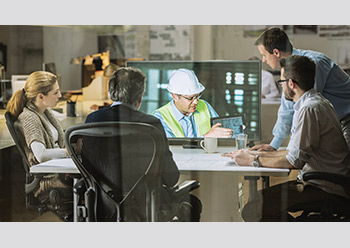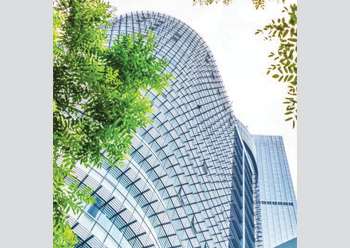
 BLE and asset inspection management solutions make inspections quick and easy.
BLE and asset inspection management solutions make inspections quick and easy.
Before the age of mobile technology, asset management was both difficult and cumbersome. Today that doesn’t have to be the case, thanks to Bluetooth Low Energy (BLE) and asset inspection management solutions.
BLE technology has penetrated both the consumer and business sectors, with innovative and highly beneficial use cases. Mobile technology in the form of smartphones and tablets can now be paired and used with BLE beacons/devices to capture information about any asset.
Similar to barcodes, QR codes and RFID tags, BLE uses a similar technology but at a higher level. Instead of acting as passive devices that would normally require a user to be very close to the item to connect, BLE has a much larger range. By utilising a low-energy beacon transmitting to nearby devices, the range can be extended from centimetres to hundreds of metres. Commonly available for use with iOS and Android devices, BLE technology can truly transform the way that assets are inspected and managed; instead of having to effectively tap the RFID with a phone or scan a QR code at a close distance, the inspector/operator can be at a further distance.
Whilst this may seem like a trivial difference, there are profound changes in how inspection and maintenance can be carried out when there are numerous devices out of normal reach. If we consider anything that could be visually inspected from over an arm’s length away, BLE energy would allow data and information capture where normal RFID or barcodes may not be as quick/work at all.
 |
|
Smartphones and tablets can now be paired and used with BLE devices to capture information about any asset. |
Just like barcodes and QR codes, BLE tags are often designed to withstand rugged environments, with a small size, low weight, and long battery life. This means that any digital inspection can rely on these tags to be functioning no matter the physical environment or facility they may be used in. If each BLE tag is attached to a specific asset, equipment or power tool, several data points could be captured simply by being in range and having the checklist ready. Information such as the location, condition, status, inspection history etc, can all be recorded using the pairing of a BLE tag and a mobile device.
If an inspector has several assets to inspect that are the same, the official could, for example, generate a list of all the tags within the vicinity and compare the status or inspection history of each one. Inspection becomes much quicker and easier when one does not need to go searching for the barcode or RFID location on each asset. This includes any routine daily inspection, compliance check or quality assurance audit, or just tracking the equipment.
Users of digital inspections currently will realise the potential that integrating BLE and asset inspection management can bring. Common paperless inspection features such as proactive notifications, as well as automatically suggested corrective actions can all be merged with the BLE technology. If an inspector or technician is in a facility and finds a deteriorated condition status on one of the assets via the BLE tag, the inspector can record this, alerting the repair teams as well as management staff. This means that replacement or downtime for maintenance can be scheduled as soon as possible – which can impact the return on investment (ROI) or business performance. At the same time, to mitigate further deterioration in the condition, an automatically suggested, pre-configured corrective action can be issued to the inspection personnel on the spot. This action can be configured prior to the inspection, to give the inspector a stopgap solution at the time to take the best possible action. As well as the checklist recording this issue, the inspection platform would also be able to file this report in line with the asset’s inspection history, so that when it does come out of repairs and the next inspection is due, the inspector on that day will know the history.
Integrating BLE technology may seem like a small change and upgrade from previous data storage via RFID, barcodes, but it can help to speed up data transmission and act as the next generation of inspection technology available for organisations.
With BLE and asset inspection management solutions, there are numerous ways to integrate technology to work for the user’s benefit. By pairing this equipment with a mobile device such as a smartphone or tablet and a fully-fledged inspection platform, the business or organisational compliance checks can be quick and easy. To ensure that the routine checks or dedicated inspections are as powerful and future-proof as possible, BLE and asset inspection management should be considered alongside a premium inspection provider. By doing so, it can be guaranteed that the inspection processes are set up and tailored to the specific needs and requirements.
There are many different benefits to implementing BLE and asset inspection management solutions to any facility or construction inspection process, making these inspections quick and easy processes.
*Australia-based Pervidi offers a range of paperless solutions for asset management, digital inspection, compliance and quality assurance and computerised maintenance management.





















_0001.jpg)


.jpg)
















.jpg)








.jpg)





